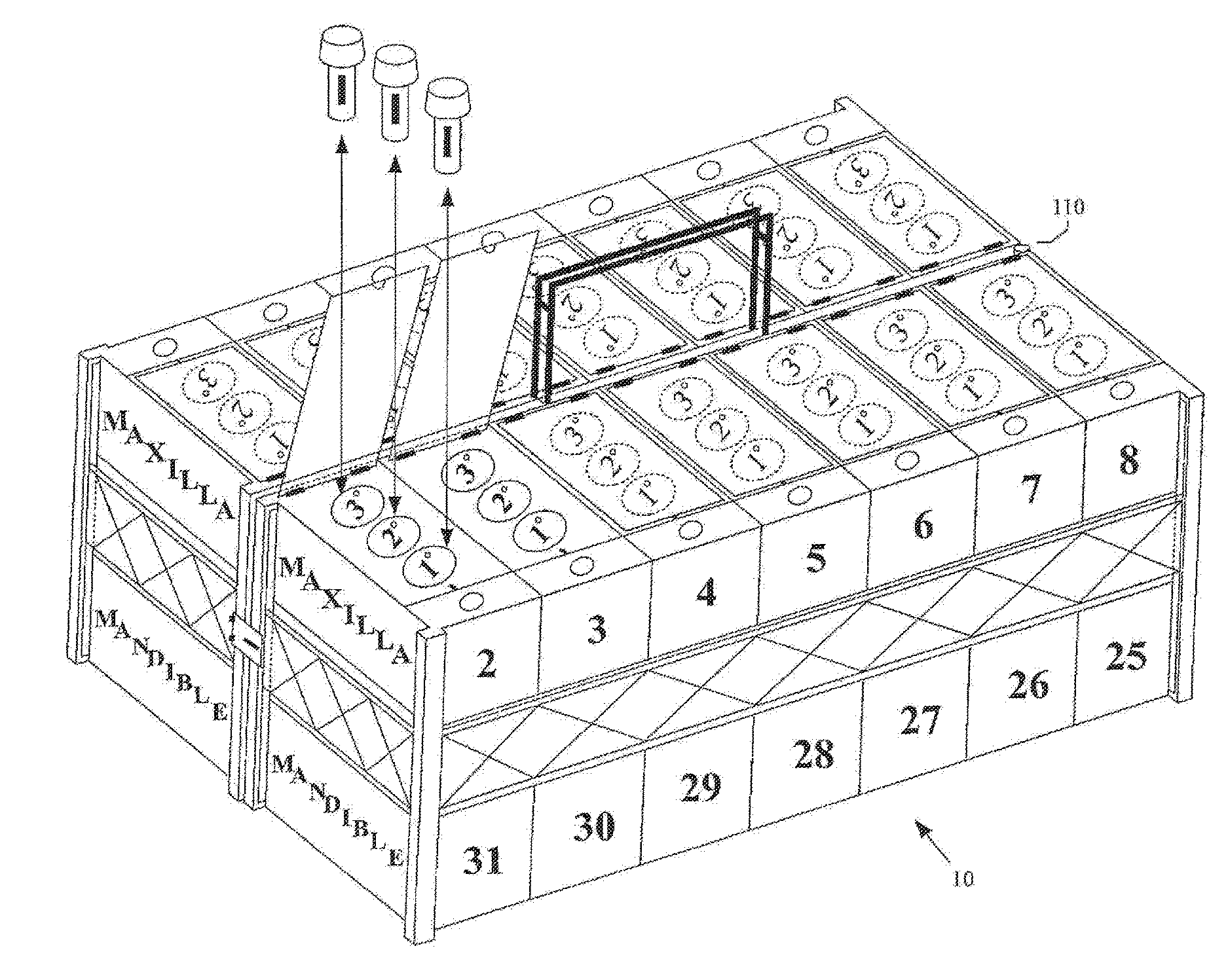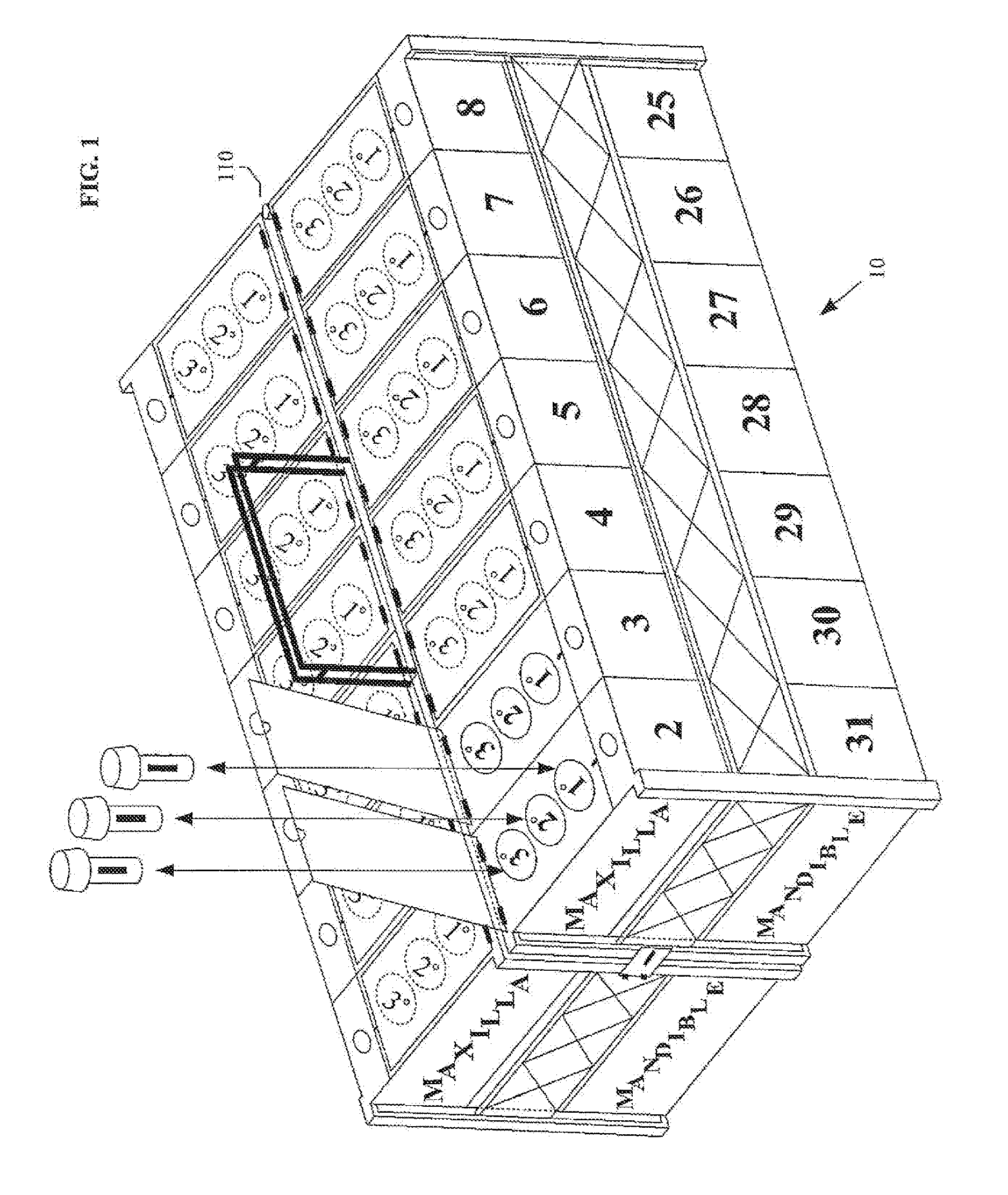Dental Implant Surgery Organizer Case
a dental implant and organizer technology, applied in the field of dental implant surgery, can solve the problems of implant site, poor primary fixation, malpractice, etc., and achieve the effect of preventing accidental mis-placement of implants
- Summary
- Abstract
- Description
- Claims
- Application Information
AI Technical Summary
Benefits of technology
Problems solved by technology
Method used
Image
Examples
Embodiment Construction
[0049]FIG. 1 shows a first embodiment of the dental implant organizer case 10 of the present invention, which serves to organize the multitude of implant platforms that may need to be readily available to an oral surgeon during the performance of implant procedures. As seen in FIG. 2, the dental implant organizer case 10 may comprise an elongated left-side case portion 10L being pivotally and / or releasably attached to an elongated right-side case portion 10R using hinge 110, where the left-side case portion and the right-side case portion may pivot 180 degrees relative to each other. Hinge 110, and its attachment to both the elongated left-side case 10L and the elongated right-side case 10R may permit the two cases to pivot between a collapsed position, in which they are parallel but side-by-side with each other (FIG. 1), and an extended position, in which they are parallel but in line with each other (FIG. 2). The left-side case 10L and the right-side case 10R may be releasably sec...
PUM
 Login to View More
Login to View More Abstract
Description
Claims
Application Information
 Login to View More
Login to View More - R&D
- Intellectual Property
- Life Sciences
- Materials
- Tech Scout
- Unparalleled Data Quality
- Higher Quality Content
- 60% Fewer Hallucinations
Browse by: Latest US Patents, China's latest patents, Technical Efficacy Thesaurus, Application Domain, Technology Topic, Popular Technical Reports.
© 2025 PatSnap. All rights reserved.Legal|Privacy policy|Modern Slavery Act Transparency Statement|Sitemap|About US| Contact US: help@patsnap.com



